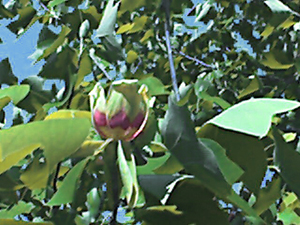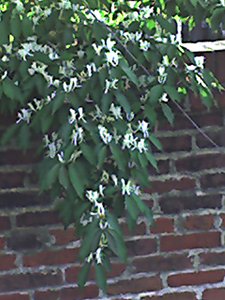 With all the reallocation of bees that has been going on, you might think that the girls on the roof had somehow slipped my mind. Hardly! Two things occupy me on their behalf: number one is the timing and preparation for the Spring nectar flow; and two is whether the wonderful queen of Twain, Ms. Eleanor, will soon be experiencing regicide. The flood of nectar and the effectiveness of queens are major concerns at the tipping point of Spring, and none of the new colonies is yet much affected by these changes.
With all the reallocation of bees that has been going on, you might think that the girls on the roof had somehow slipped my mind. Hardly! Two things occupy me on their behalf: number one is the timing and preparation for the Spring nectar flow; and two is whether the wonderful queen of Twain, Ms. Eleanor, will soon be experiencing regicide. The flood of nectar and the effectiveness of queens are major concerns at the tipping point of Spring, and none of the new colonies is yet much affected by these changes.The picture you see here today was taken on Monday (with my cell phone, yielding the unique graphic quality we have come to expect from that medium), and what you see is a Tulip Poplar bloom, harbinger of the sudden and intense nectar flow that characterizes the months of May and June here.
 I walk the canine portion of our menagerie (which includes indoor and outdoor fish, roof bees, bird feeders, one cat, three dogs, and a couple of uninvited squirrels) in an old cemetery in our neighborhood. While they bounce around, I look for pollinators and wild birds. Today the buttercups turned my toes yellow while we were mooning around. On Monday, a young Tulip Poplar in the cemetery set forth that first bloom, and I began to strategize.
I walk the canine portion of our menagerie (which includes indoor and outdoor fish, roof bees, bird feeders, one cat, three dogs, and a couple of uninvited squirrels) in an old cemetery in our neighborhood. While they bounce around, I look for pollinators and wild birds. Today the buttercups turned my toes yellow while we were mooning around. On Monday, a young Tulip Poplar in the cemetery set forth that first bloom, and I began to strategize. The "waste" areas and the fences and the walls around the cemetery are filled with blooming bush honeysuckle. The blooms smell like heaven, but remind me of popcorn. As they age, the white turns to a medium yellow, like the popcorn at the movie theatre. The bushes are full of pollinators in late afternoon, which means they must be absolutely teaming in the morning. I tried to get pictures of the three or more native bees that were working them today, not to mention the butterflies. I have seen honeybees there that are almost certainly not my girls: I suspect another local beekeeper.
The "waste" areas and the fences and the walls around the cemetery are filled with blooming bush honeysuckle. The blooms smell like heaven, but remind me of popcorn. As they age, the white turns to a medium yellow, like the popcorn at the movie theatre. The bushes are full of pollinators in late afternoon, which means they must be absolutely teaming in the morning. I tried to get pictures of the three or more native bees that were working them today, not to mention the butterflies. I have seen honeybees there that are almost certainly not my girls: I suspect another local beekeeper.But back to my own roof! The first point in my nectar flow game plan: the honey supers on both Twain and Wilde are once again in the wrong order. I should have placed the ones with the bare foundation beneath the ones with mostly drawn honeycomb. I had my reasons (I want the bees to move the brood nest up into that fershlugginer deep box that got filled with honey last year) but these efforts were – once again – sincere but misdirected.
When I made the splits, I stuck lots of bare frames in the lower boxes, so that has probably occupied alot of honeybee time and energy in the interim, but it is probably time to set things right, with all the boxes deployed appropriately. Also, I had a medium super with drawn brood comb in the basement, but the wax moths had begun to set up shop in it. I froze the moth-eaten frames, cleaned them up some, and put them back in, too. They need to be checked, nonetheless: if the girls are using the damaged comb to raise drones, I should pull them once they are capped as a varroa control measure. If they are not using them, I should be sure that the wax moths are really truly dead, or maybe (ouch) just cull the frames. Finally, I might need to pull out all the frames that, like my buttercup feet, are full of pollen, because they are just gumming up the works and the bees will only take fresh now anyway.
Every day I go up to visit and to worry, but the girls seem to be buzzing along as usual. Making the splits was an opportunity to commit any amount of mayhem (smooshing queens, disrupting the brood cycle, annihilating the transferred bees through jerky driving). I could not find Eleanor in the Twain colony during all this, but the master beekeepers I talked to on Saturday said that the nail polish I used to mark her was likely to have been groomed off within the hour. The bees and I therefore have something in common: we neither of us have particular use for the stuff, and "pollen yellow" suits our tootsies better.
No comments:
Post a Comment